Both inducible nitric oxide synthase and NADPH oxidase contribute to the control of virulent phase I Coxiella burnetii infections
- PMID: 15501800
- PMCID: PMC523001
- DOI: 10.1128/IAI.72.11.6666-6675.2004
Both inducible nitric oxide synthase and NADPH oxidase contribute to the control of virulent phase I Coxiella burnetii infections
Abstract
Host control of Coxiella burnetii infections is believed to be mediated primarily by activated monocytes/macrophages. The activation of macrophages by cytokines leads to the production of reactive oxygen intermediates (ROI) and reactive nitrogen intermediates (RNI) that have potent antimicrobial activities. The contributions of ROI and RNI to the inhibition of C. burnetii replication were examined in vitro by the use of murine macrophage-like cell lines and primary mouse macrophages. A gamma interferon (IFN-gamma) treatment of infected cell lines and primary macrophages resulted in an increased production of nitric oxide (NO) and hydrogen peroxide (H2O2) and a significant inhibition of C. burnetii replication. The inhibition of replication was reversed in the murine cell line J774.16 upon the addition of either the inducible nitric oxide synthase (iNOS) inhibitor NG-monomethyl-L-arginine (NGMMLA) or the H2O2 scavenger catalase. IFN-gamma-treated primary macrophages from iNOS-/- and p47phox-/- mice significantly inhibited replication but were less efficient at controlling infection than IFN-gamma-treated wild-type macrophages. To investigate the contributions of ROI and RNI to resistance to infection, we performed in vivo studies, using C57BL/6 wild-type mice and knockout mice lacking iNOS or p47phox. Both iNOS-/- and p47phox-/- mice were attenuated in the ability to control C. burnetii infection compared to wild-type mice. Together, these results strongly support a role for both RNI and ROI in the host control of C. burnetii infection.
Figures
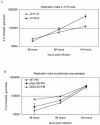
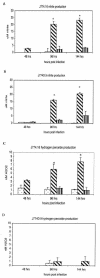
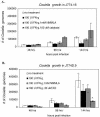
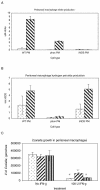
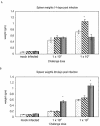
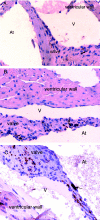
References
-
- Adams, D. O., and T. A. Hamilton. 1984. The cell biology of macrophage activation. Annu. Rev. Immunol. 2:283-318. - PubMed
-
- Adams, L. B., M. C. Dinauer, D. E. Morgenstern, and J. L. Krahenbuhl. 1997. Comparison of the roles of oxygen and nitrogen intermediates in the host response to mycobacterium tuberculosis using transgenic mice. Tuber. Lung Dis. 78:237-246. - PubMed
-
- Akporiaye, E. T., D. Stefanovich, V. Tsosie, and G. Baca. 1990. Coxiella burnetii fails to stimulate human neutrophil superoxide anion production. Acta Virologica 34:64-70. - PubMed
Publication types
MeSH terms
Substances
Grants and funding
LinkOut - more resources
Full Text Sources
Molecular Biology Databases

